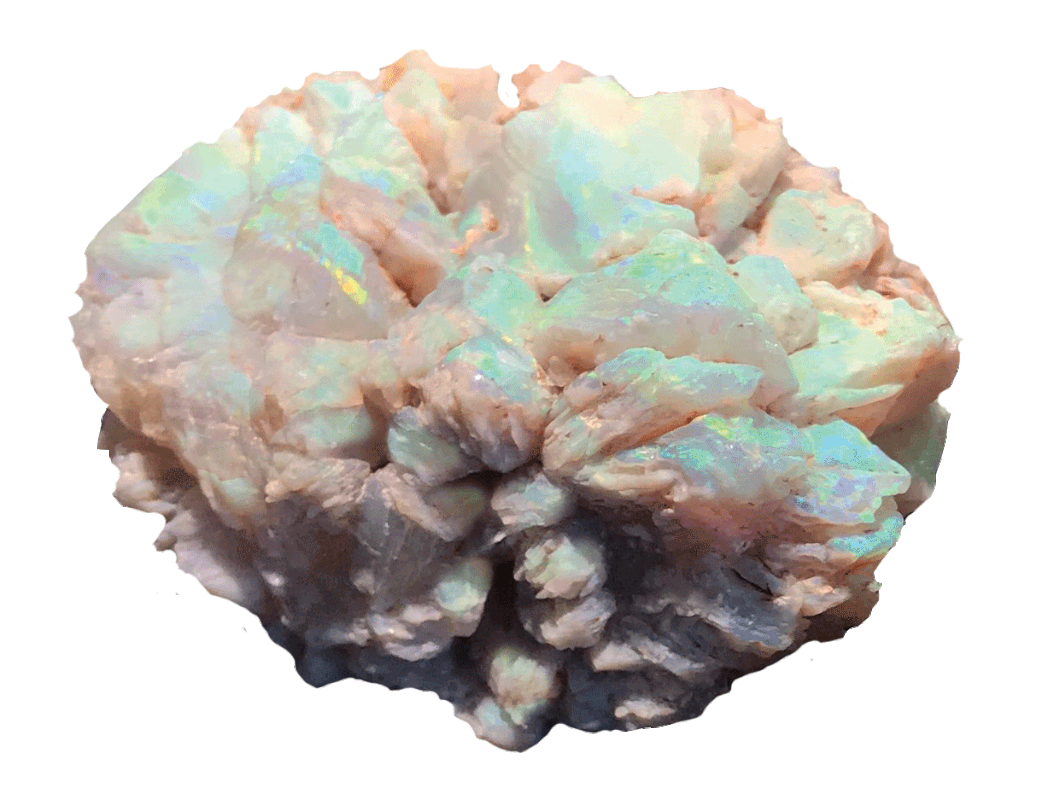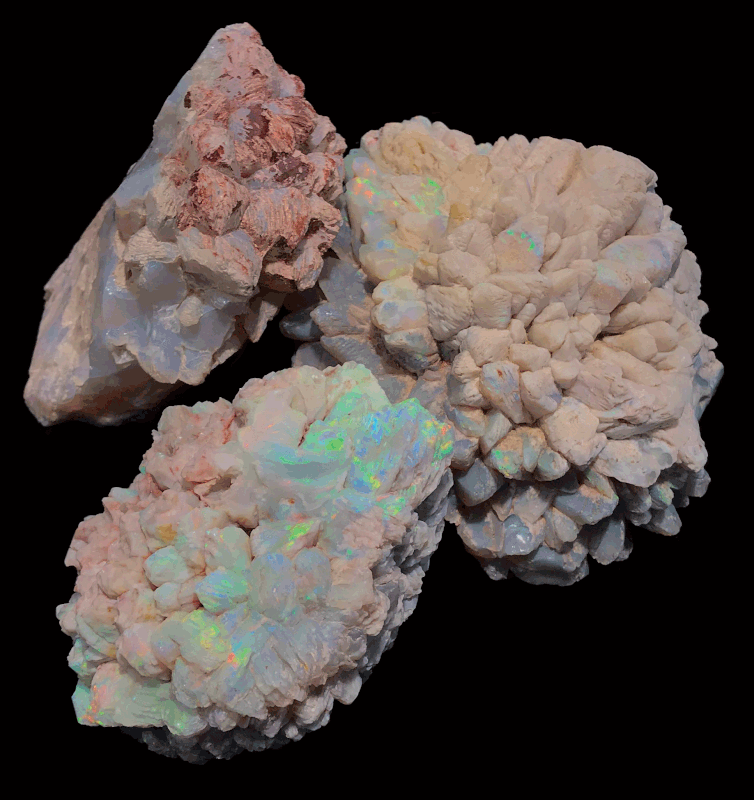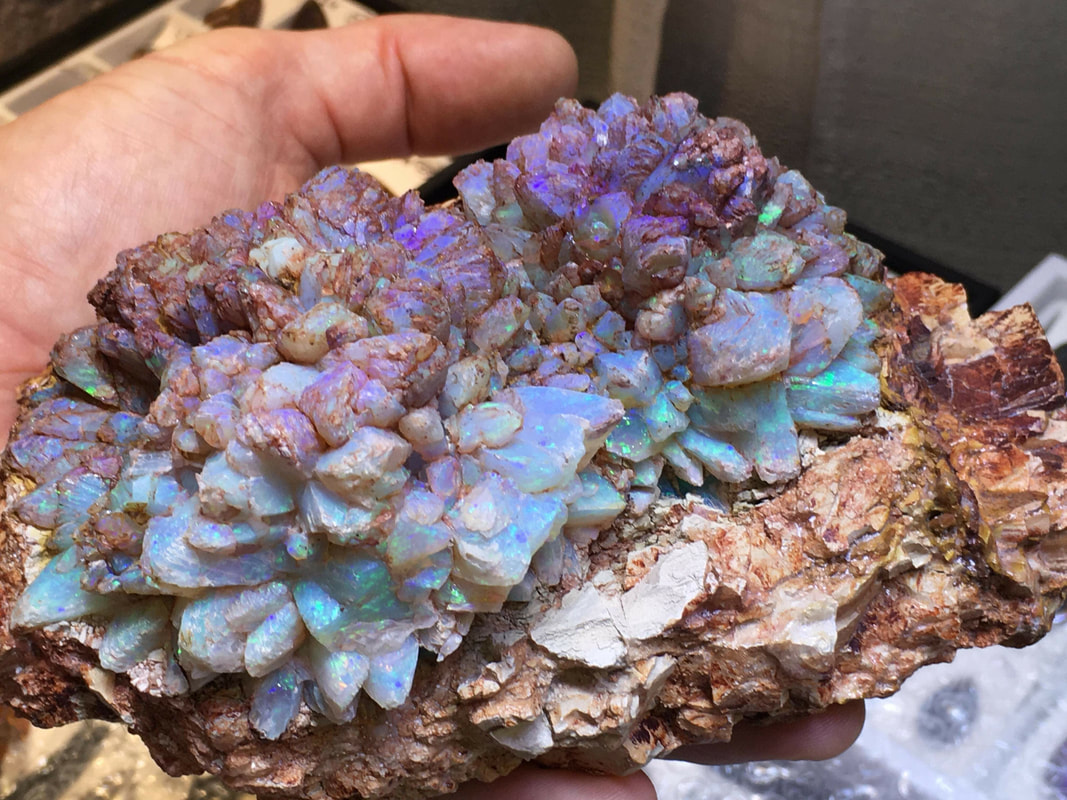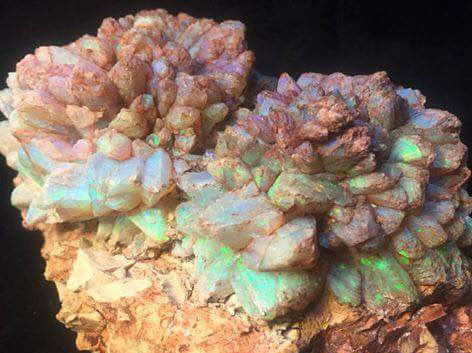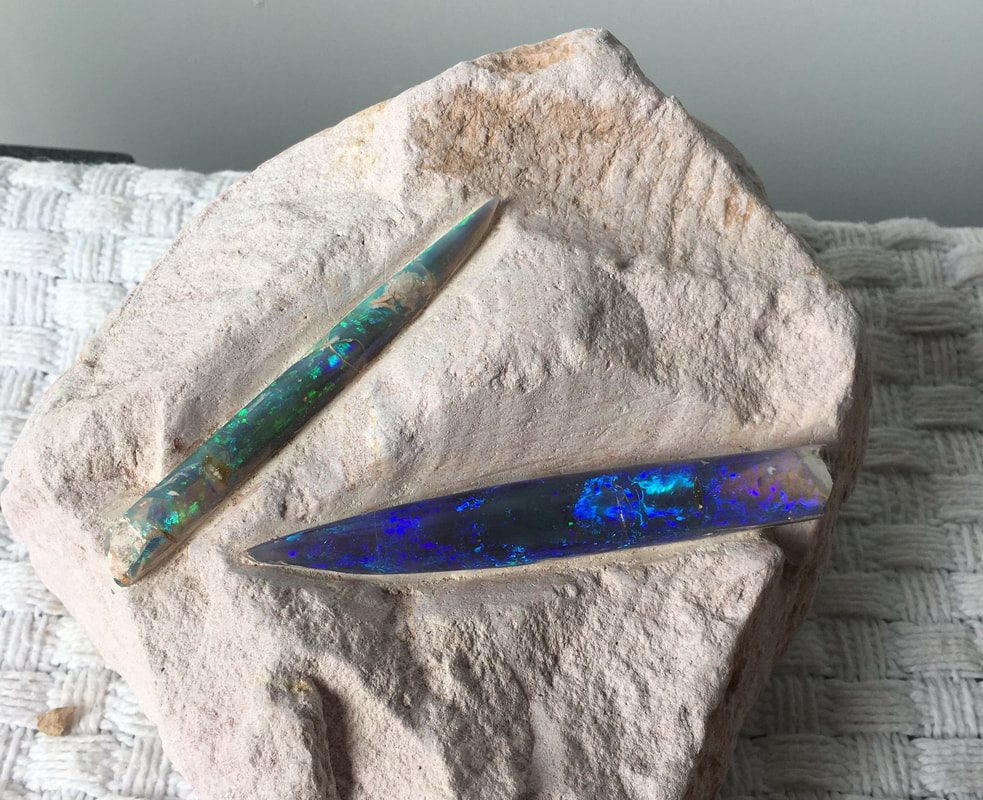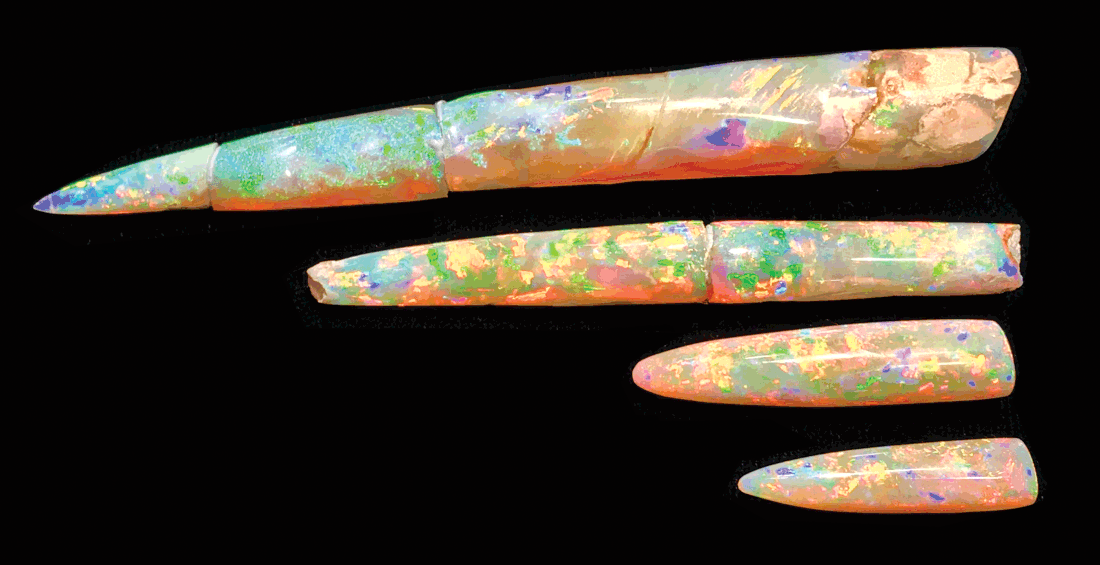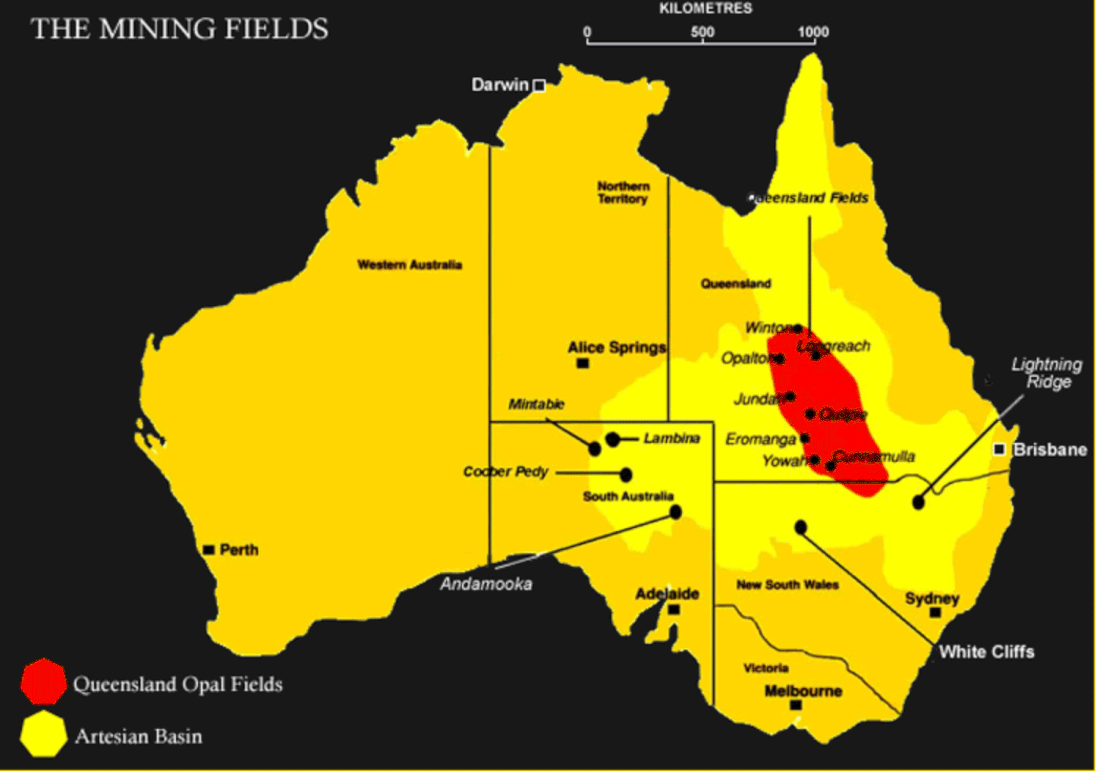THE SPECTACULAR WORLD OF
OPAL PINEAPPLES AND BELEMNITES
The world has a number of spectacular minerals that are known primarily to collectors, but that deserve our attention, not only for their beauty, but also for their interesting story. Recently, I was introduced to two such minerals in the opal universe: Opal Pineapples and Belemnites.
By Cynthia Unninayar
By Cynthia Unninayar
|
|
Opals are among the most beautiful of Earth's gems. Each is unique and each has its own personality and color pattern. Some of the more interesting opals are the opalized fossils of shells, wood and even skeletons of various marine creatures. And there are some forms that nearly defy belief.
Opal Pineapples One of the rarest and most fascinating types of opal comes in the shape of a palm-sized cluster of radiating points that resembles a pineapple. These "Opal Pineapples" are found only in the Cretaceous sediments of the White Cliffs in Australia. They range from gem quality with bright colors to whitish with opaque surfaces. Despite the name, these opal pineapples are not fossilized fruit. Rather, they are pseudomorphs, meaning that the opal has taken the form of the mineral it replaced; in this case, a cluster of crystals. So what were these original crystals? Scientists believe that they were probably an "extinct" mineral called ikaite, the hexahydrate of calcium carbonate. Upon hearing this, my first question was: how can an inorganic mineral become "extinct?" Ikaite forms only in water under near freezing conditions, such as that in the polar regions or at the bottom of deep oceans. When this unusual mineral was formed, the White Cliffs opal fields were beneath a cold sea, since Australia was further south than it is now. According to mineralogists, the exact mechanism of opal's replacement of the ikaite is not totally clear. In a few words, however, as the ambient temperatures rose, the ikaite disappeared, with the crystals being filled in by opal. Belemnites During the Cretaceous period in Australia, the shallow Eromanga Sea covered a third of the continent. It teamed with fish and other marine creatures, and among them were belemnites. These ancient Cephalopods lived around 100 million years ago and were like squids except that they had hard internal skeletons and ten arms with hooks used for catching prey. When a belemnite died, it sank to the bottom of the sea where its body became covered with clay sediments. After the seas dried up, the silica gel from the sandstone filled in the crevices left by the decaying body, eventually taking its elongated bullet shape. Over millions of years, the silica gel hardened into opal. Most belemnites do not have the typical opal colors, and those that do are extremely rare. The Eromanga Sea turned into an inland desert over the millions of years, and belemnites and other opalized fossils are found in some opal fields in areas such as White Cliffs and Coober Pedy. While fossilized belemnites are found in other parts of the world, the opalized varieties are only found in Australia. They are often in a broken state, but occasionally an opalized sample is found intact. Although it is rare to find Opal Pineapples and Opalized Belemnites, these beautiful gems make us appreciate how unique Mother Nature is to have produced such spectacular creations. |

